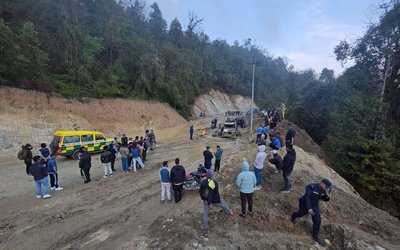
Tibetan Losar is a time for family, tradition, and celebration – but not unlike Nepalese culture, family is often stretched to its widest possible meaning. I spent Losar with my 300 brothers at Jovo Kadahmpa Monastery near Boudhanath in Kathmandu, where local children have been receiving free education and lodging for almost a decade.
2nd March heralded a new year, 2141 according to the Tibetan lunar calendar, which marks the first Tibetan king taking his throne in 127 BC. Celebrations run for fifteen days, when families dine on cheesy noodles and barley wine, fortunes are read in mo (dough-balls filled with unusual ingredients like coal and chilli), and Tibetans come together to dance and sing the night away. Monasteries open their doors for visitors, with many holding concerts or special pujas to mark the occasion. The holiday culminates in the Chunga Choepa, the Butter Lamp Festival, which features elaborate carvings made of yak butter and monks performing sacred rituals to banish bad energy and bring good luck. These two weeks of ceremony encapsulate the best of what is arguably Tibet’s largest and most important export – its culture.
Every Tibetan has two ages, the one they were born with and the age of their first Losar. That means that Tibetans not only celebrate the New Year but a collective birthday as well – no doubt adding to the cohesiveness of a national identity.
Similarly in Buddhism is the Sangha, or Buddhist community, which forms part of the Threefold Refuge of the religion. Here a sense of community is inseparable both to religion and culture. Taking part in the evening puja with the lamas of my monastery, I can understand the importance of both, and the air becomes almost palpable with a feeling of brotherhood and good will. In line with the Mahayana tradition, the monks pray collectively for the peace and happiness of all beings, and they believe ardently that through such devotion they will be able to bring an end to world suffering and lead others into enlightenment.
As with every culture’s New Year, Losar is a time for cleansing, renewal and the offering of blessings of prosperity for the months ahead. 2141 will be the Year of the Wood Horse, a very significant animal in Tibetan astrology. The Horse, in another elemental version known as the Lung Ta, features on the Tibetan prayer flag. This emblem is supposed to carry with it the Jewel of Enlightenment. Prayer flags are hoisted high above houses and monasteries so that their mantras can be carried by the wind across the countryside. Tibetans believe that when an individual’s lung-ta is high, opportunity and good fortune comes.
2141 is said to be a year of action, innovation and generosity. Losar will see Boudhanath bloom with the sounds of long copper horns and the scents of holy incense and khapsie carried processions of monks clad ceremoniously in yellow and orange. Thousands of pilgrims will descend upon the stupa in a celebration of what they hope to be a very enlivened and enlightened New Year.
- An Inconvenient Truth
- Apr 18, 2014
- Mental Health: Arrested Development
- Apr 05, 2014
- Bloody Foreigners
- Mar 24, 2014
- ‘Shivaratri: Caste in a New Light’
- Mar 09, 2014
















